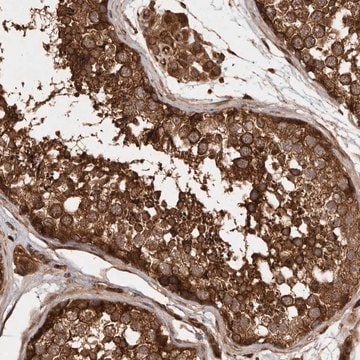T59803
Triethylenglycoldimethylether
ReagentPlus®, 99%
Synonym(e):
Dimethyltriglykol, NSC 66400, Triglym
About This Item
Empfohlene Produkte
Dampfdichte
>4.7 (vs air)
Qualitätsniveau
Produktlinie
ReagentPlus®
Assay
99%
Form
liquid
Selbstzündungstemp.
375 °F
Expl.-Gr.
8 %
Brechungsindex
n20/D 1.423 (lit.)
bp
216 °C (lit.)
mp (Schmelzpunkt)
−45 °C (lit.)
Dichte
0.986 g/mL at 25 °C (lit.)
SMILES String
COCCOCCOCCOC
InChI
1S/C8H18O4/c1-9-3-5-11-7-8-12-6-4-10-2/h3-8H2,1-2H3
InChIKey
YFNKIDBQEZZDLK-UHFFFAOYSA-N
Suchen Sie nach ähnlichen Produkten? Aufrufen Leitfaden zum Produktvergleich
Verwandte Kategorien
Allgemeine Beschreibung
Anwendung
- Extracting solvent in a modified SA-HPSW (Supercritical Anti-Solvent with High-Pressure Solvent Wash) system.
- Solvent in the synthesis of passivated iron nanoparticles.
Rechtliche Hinweise
Signalwort
Danger
H-Sätze
Gefahreneinstufungen
Eye Irrit. 2 - Repr. 1B
Zusätzliche Gefahrenhinweise
Lagerklassenschlüssel
6.1C - Combustible acute toxic Cat.3 / toxic compounds or compounds which causing chronic effects
WGK
WGK 1
Flammpunkt (°F)
235.4 °F - closed cup
Flammpunkt (°C)
113 °C - closed cup
Analysenzertifikate (COA)
Suchen Sie nach Analysenzertifikate (COA), indem Sie die Lot-/Chargennummer des Produkts eingeben. Lot- und Chargennummern sind auf dem Produktetikett hinter den Wörtern ‘Lot’ oder ‘Batch’ (Lot oder Charge) zu finden.
Besitzen Sie dieses Produkt bereits?
In der Dokumentenbibliothek finden Sie die Dokumentation zu den Produkten, die Sie kürzlich erworben haben.
Kunden haben sich ebenfalls angesehen
Unser Team von Wissenschaftlern verfügt über Erfahrung in allen Forschungsbereichen einschließlich Life Science, Materialwissenschaften, chemischer Synthese, Chromatographie, Analytik und vielen mehr..
Setzen Sie sich mit dem technischen Dienst in Verbindung.












